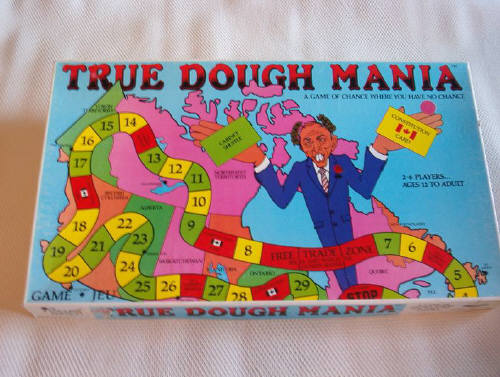'Put our TV bands to better use'
I'm slow to catch this, but Neil Reynolds had an interesting article in last Friday's Globe and Mail ($). Here's an excerpt.
Put our TV bands to better use: Sell them (Nov. 17):
Pssst. Here's a way to make Canadians a cool $6-billion, cut cellphone costs and simultaneously drive the wireless economy. Simply auction off the country's entire “TV band” — airwaves no longer needed for this redundant purpose.
When U.S. economist Thomas Hazlett looked at Canadian broadcast policy four years ago, he found an enormous waste of a scarce natural resource — the electromagnetic frequencies used by relatively few TV stations to transmit relatively few programs to relatively few people in relatively few cities. In allocating 67 TV channels, he said, Canada had “consumed valuable bandwidth while delivering very little service to the public.” Since federal regulators had given each channel six megahertz of frequency space, we were using up 402 MHz for TV signals alone, “a vast commitment of radio spectrum.” We're using freight trucks, in other words, to deliver carloads of TV programs.
With the same allocation of frequencies as Canada, the U.S. uses its band more efficiently by allowing 1,472 full-power TV stations (compared with 136 in Canada), 210 TV markets (compared with 43) and an average of 7.0 stations per market (compared with 3.1). This sparse use of the TV band meant that the typical Canadian market provided only three over-the-air channels. This didn't matter much to most Canadians — by 2002, 74 per cent of them had opted for cable TV, 7 per cent for Canadian satellite TV and 8 per cent for U.S. satellite TV.Here is Mr. Hazlett at the University of Montreal in June, 2002: “It is not possible to argue that 67 channels of scarce radio spectrum are optimally used to deliver [only a very few] video channels. The typical Canadian market uses just 4.5 per cent of its allocated bandwidth. The TV band is underemployed throughout the country. There are no offsetting efficiency arguments. This waste produces no social dividend.” Worse still, Canadians had already abandoned over-the-air TV. Only 10 per cent of Canadians still used TV antennas. Four years on, the number must now be even less.
Canada's profligate dispersal of bandwidth for over-the-air delivery of TV programs, long after Canadians had switched to cable and satellite TV, necessitated the country's parsimonious hoarding of bandwidth for New Economy wireless technologies. This is one reason why only 50 per cent of Canadians are using wireless devices — compared with 70 per cent of Americans and 100 per cent of Europeans. It's one reason why cellular phone service in Canada costs much more than it needs to cost. Industry Minister Maxime Bernier will auction off more spectrum next year, specifically for cellular and wireless tasks, which doesn't go nearly far enough.
Once chief economist for the U.S. Federal Communications Commission, Mr. Hazlett is now a professor of law and economics at George Mason University in Virginia. Recognized internationally as an authority on the economics of broadcasting, he serves as director of the university's Information Economy Project, which — in its mission statement — recommends that governments get out of the way and permit the “wireless century” to develop without needless bureaucracy and anachronistic regulation.
In his analysis of Canadian airwave use, Mr. Hazlett cited Italy as an example of a country in which government did get out of the way — though inadvertently. Deregulation, Italian style, occurred in the mid-seventies when courts permitted unlicensed entry into cable TV. The Italians spontaneously extended this liberty to all TV broadcasting. At the time, the country had 90 TV stations. Within 10 years, it had 1,300 — the highest TV station density in the world. (Canada and the U.S. have 0.05 TV stations per 10,000 people; Italy has 1.0). Italian TV stations get 20 times as much use from bandwidth as Canadian or American stations. Cable TV scarcely exists; it was never needed and serves less than 1 per cent of households.
Mr. Hazlett calculated “the enormous economic benefits” that would result were Canada to sell at auction the country's entire TV bandwidth. The country's remaining roof-top antennas would need to be replaced with satellite dishes at a cost of $600-million. But the TV band auction (based on Canada's sale of 40 MHz for $1.5-billion in 2001) would clear almost $6-billion.


1 comment:
Hi ,
Your work on the blog is fantastic. I’m influenced in a positive way.
Specifically, I got some nice information in this page http://truedough.blogspot.com/2006/11/put-our-tv-bands-to-better-use.html
If you are interested, I would like to exchange links by placing a content link in your website. Don’t you think it would be nice for both our sites?
I’m waiting for your response.
Regards,
David
Email: davidwilsen@gmail.com
Post a Comment